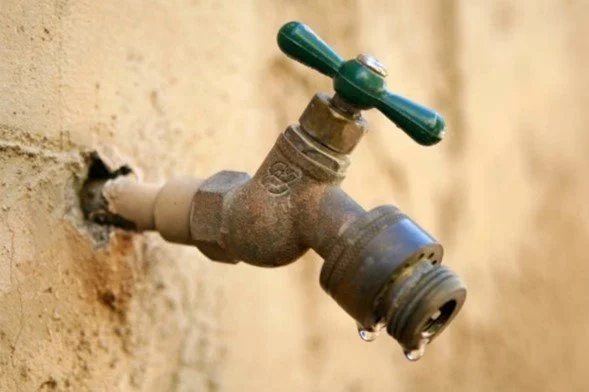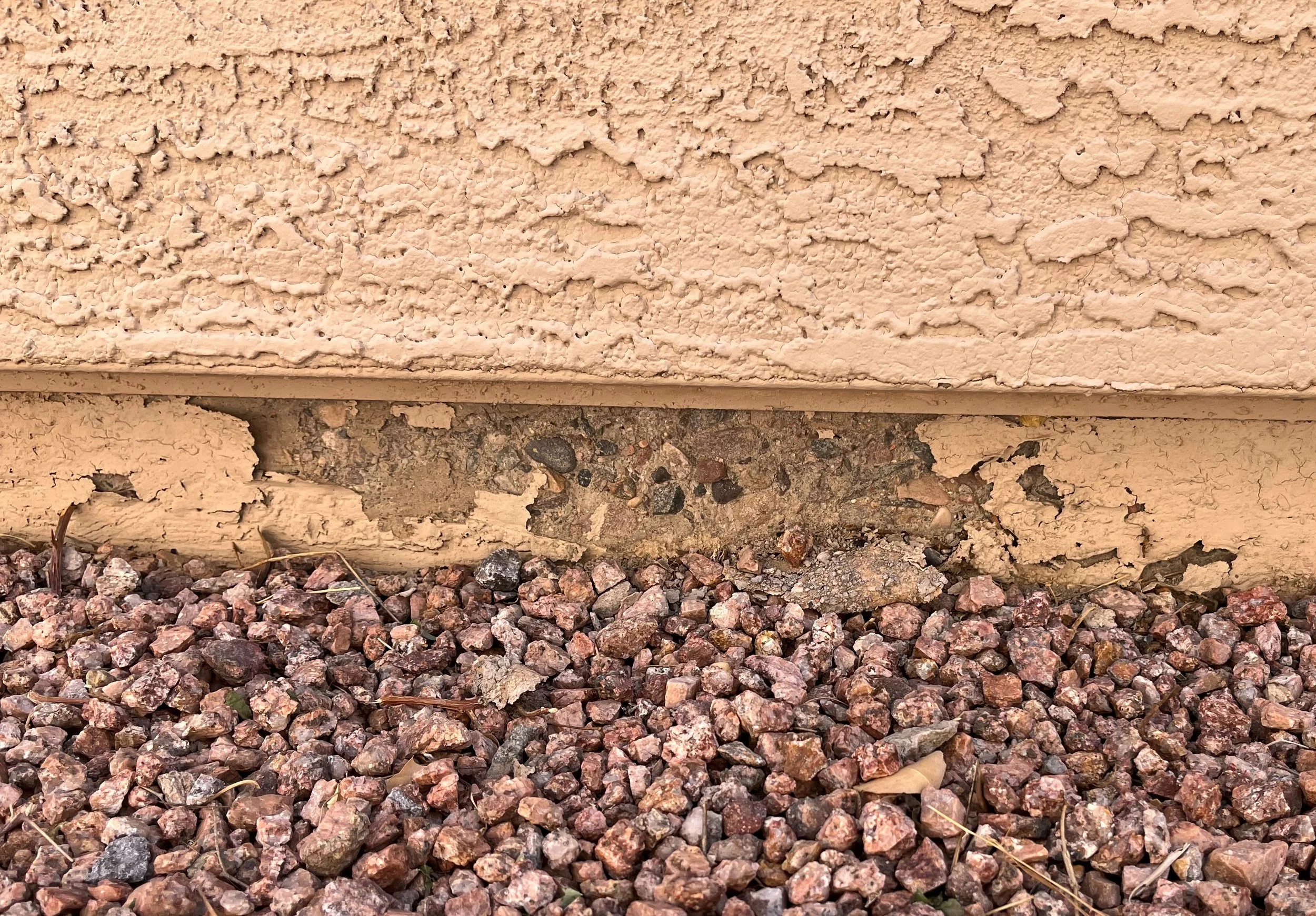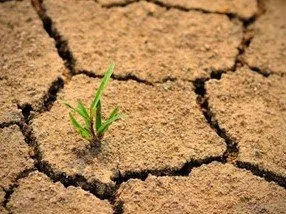Keys to Foundation Health
Summary:
Peeling paint, bad drainage, eroding concrete surfaces, dripping hose bibs and irrigation systems are all factors that can damage your foundation system. Whether it is a post-tension concrete slab on grade or a conventional stem wall / footing system, there are vulnerable steel components within the concrete you are seeing.
Steel Elements:
Rebar, post-tension cables and end haunches, hold down straps, and anchor bolts are all made of steel and subject to corrosion if exposed to the elements. The formation of rust or corrosion on steel is a growth or expansion process. This expansion has enough force to fracture the concrete and cause structural failures requiring expensive repairs.
Grading:
To prevent or mitigate this damage, positive ground slope away from your home is a good start. Don’t let water pool next to the foundation. It is recommended that a minimum ground slope of 5% is maintained away from the home for a distance of 10ft (6in fall in 10ft). We advise you to consider installing gutters. Remember that the downspouts should be tied into underground solid pipes discharging near the street. This will ensure that rainwater from the roof is shunted away from your home.
Irrigation:
Irrigation valves notoriously leak. Moving these further from the foundation is recommended. Keep an eye out for and fix all leaks in faucets, spigots, backflow valves, etc. Even if these leaks are slow, they will keep the soil near the foundation moist and cause the rebar and steel components to rust.
Paint:
Peeling paint? We recommend a good quality exterior grade paint suitable for concrete and masonry surfaces. Home Depot’s Behr line has a product called “Marque”. It has an integral primer and seems to hold up very well. If your concrete surfaces have eroded away to the point that the aggregate (bits of stone or rock) is exposed, you should consider asking us for a quotation to re-surface these. Re-surfacing helps preserve the integrity of your foundation and prevents fracturing, which is a more expensive repair.
Soil:
Most of the greater Phoenix area lies atop predominantly expansive clay soils. When this type of soil gets wet it swells and as it dries it shrinks. This creates enough movement to crack concrete. For this reason, it is very important to keep the ground around your home at a stable level of water saturation and drier is better. Because of how hot and dry Phoenix is, the ground dries very quickly. If you keep it as dry as possible you will have minimal movement when it dries up after a rain, for example.






